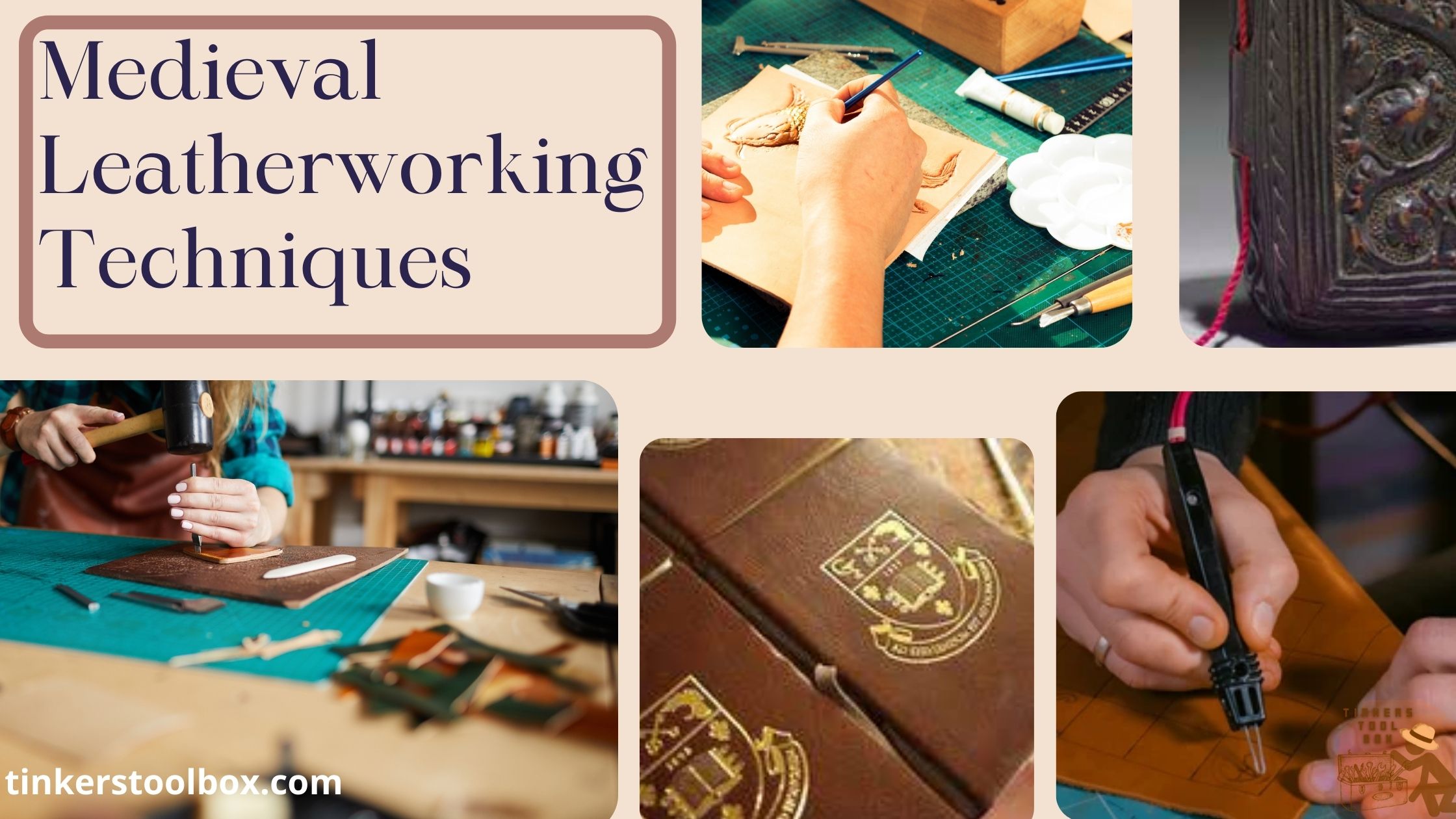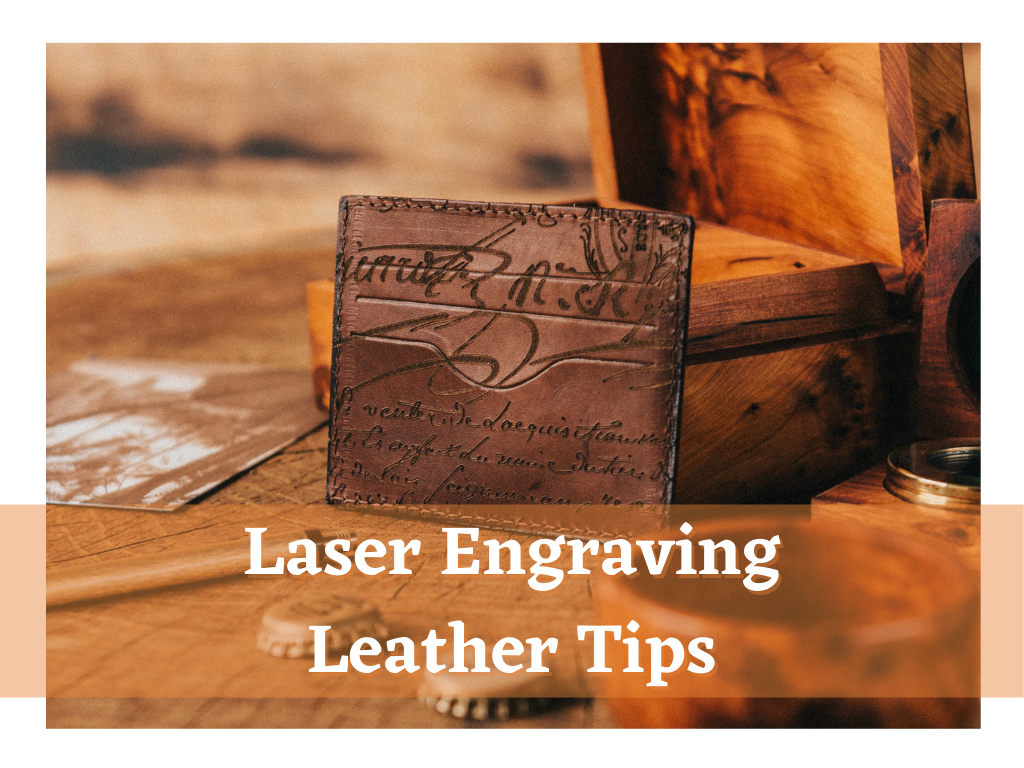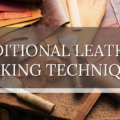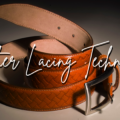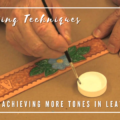Leather is widely used from the prehistoric era up to now. Across centuries, people have been using leather to clothe themselves and protect their body parts, particularly their feet, such as shoemaking. However, historians have universally agreed that leatherworking flourished and developed into something we all know now from medieval times, particularly the Middle Ages. Thus, a lot of people are wondering about the techniques used by medieval leatherworkers.
What are the different techniques used in leatherworking in medieval times? The techniques used include applique, combinations, cuir ciselé, sgraffito or scraping, blind stamping, cuero gofrado, pyrogravure, gold stamping, bas relief, creasing or veining, stamping, and gold stamping, among many others.
In this article, I will be discussing the different leatherworking techniques used in medieval times. This includes the materials, tools, and different methods that they used to do back in the day. I will also cover a short history of how leatherworking came to be in medieval times. Lastly, I will tackle some obscure methods in leatherworking that flourished in the Middle Ages.
Various Techniques Used In Medieval Leatherworking
Leather Tooling Or Ornamentation

This group of techniques is used for ornamentation purposes, as the Middle Ages used leather to somewhat express their personal freedoms in clothing. Tooling can be divided into the following categories: applique and combinations.
Applique is a technique where leatherworkers attach other things to the surface of the leather to decorate it. These can include paper-mache, other pieces of leather, decorative riveting, plaster, and so on. According to Cennini’s The Craftsman’s Handbook, when making helms and crests of leather, the leather was to be gesso coated and treated as any other material.
Deep Diving Into Combination Techniques

There are a few instances of combining techniques such as incising and stamping, such as is done in much modern leatherworking. However, that should not be taken as a solid statement that such was not done. It is quite possible for such tooling to be done only using stamping tools, but the edges of such work are usually not as sharply defined as the cut and tool work.
The Medieval Art Of Cuir Ciselé
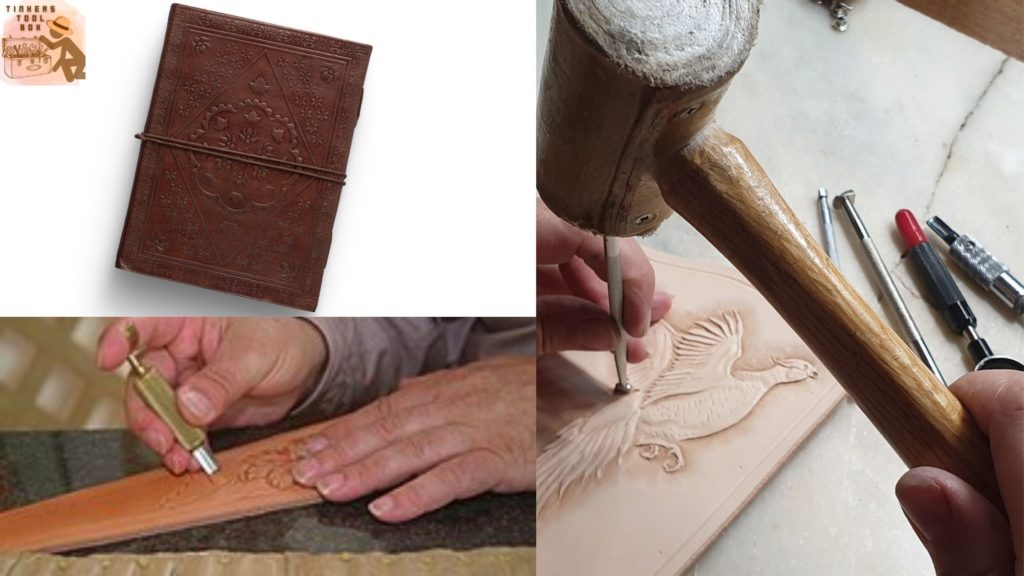
Cuir ciselé, also known as cutting or often referred to as carving, is a method of decorating leather in which the design is cut into dampened leather instead of being tooled or blocked.
The design is first outlined with a pointed tool and then dampened. Sometimes, it is then brought into relief by depressing the background, usually by stamping a succession of dots into the leather very close together by means of a pointed tool. Certain parts of the design are sometimes embossed from the fleshy side of the leather, and in such cases, the decorating must be done before covering.
According to some sources, this technique was really only practiced only during the 15th century, and then only in certain areas such as Southeastern Germany and Spain. There are no English, Flemish, and Italian examples known of this technique. Another notable technique was sgraffito or scraping, which is scraping away parts of the surface to create an overall effect.
Impressions On Impressing In Medieval Leatherworking

The Middle Ages is known to be the age where the art of impressing flourished and developed into something that we know today. Some of the known methods in impressing include, stamping, cold stamping, blind stamping, creasing or veining, poker work, and gold stamping.
One notable method is the cuero gofrado a technique where a leatherworker lays the leather atop a heated metal design and pressed down onto it, creating a multilayered effect. However, this was only done in Spain and Italy.
Gold stamping is a method of embedding gold leaf patterns into the surface of the leather. This was used to decorate book covers, leather tapestries, and other decorative materials. They used gold, silver, and tin leaf on many items, and often faked up the tin to resemble gold or silver.
Tools And Materials Used In Medieval Leatherworking
They Used A Lot Of Different Awls

Leatherworkers in medieval times used a lot of tools to perform certain tasks in leatherworking. They used several awls for different reasons, but with one purpose: to create holes on the surface of the leather.
They used a sewing awl, which has a flat oval cross-section. They also used a stitching awl, similar to the stitching awl we have today, which has a flat rectangular cross-section. You may have to sharpen the point, but there is no need to sharpen the edges, as the blade is designed to spread the hole open for taking the thread. They did not use it to cut the leather.
They also used a dull or scratching awl or round awl, which has a round cross-section and a blunted tip. This awl is not intended to punch a hole in the leather, and therefore should not be sharp. It is meant to mark the leather or to widen a previously made hole. It is also entirely probable that some form of Marking Scriber or scratch awl was used in the Middle Ages.
Saddler’s awl has a diamond cross-section. This seems to be the most commonly used form of awls in modern leatherworking but this also started from the Middle Ages. They also used a pricking awl, which is used to make holes to stitch with and should not be confused with other pricking tools such as the pricking iron and the pricking wheel.
They Also Used Different Cutting Tools
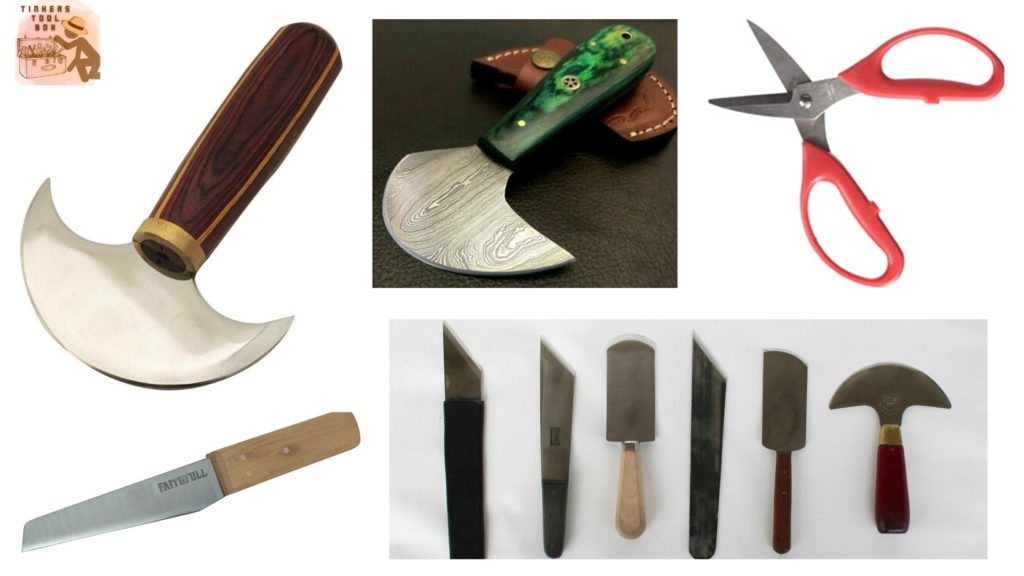
They used different kinds of knives to cut the leather into their specific or desired cuts. They used a round head knife or a half-moon knife to cut out the leather and skive the edges. They used a shoe knife, also known as a sole-trimming or a square-ended knife, which is kept very sharp and has a more square-headed blade.
Paring knives, also known as trenchers, are used to trim away excess leather, particularly in places where the half-moon knife would be difficult to handle or manage. This is a different knife from the paring knife we all know today, as this is solely meant to be used on leather only.
They also used shears, a large pair of scissors made from a single strip of metal, to cut thread and leather.
Other Tools And Materials Used In Medieval Leatherworking
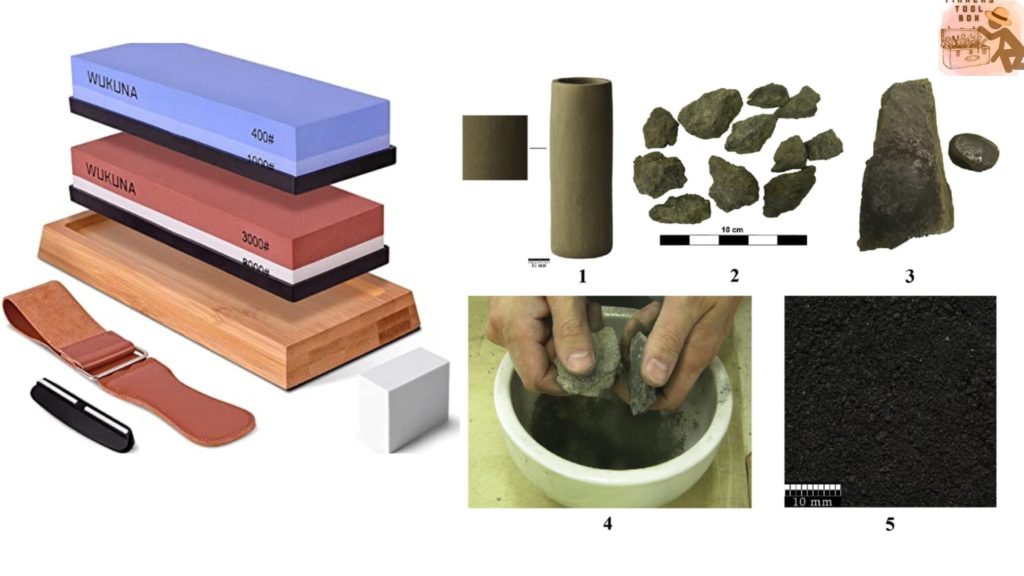
Medieval leatherworkers used hand-leather, or more commonly known as a shoemaker’s mitten, a piece of leather wrapped around the left hand to protect the hand when drawing the thread tight.
They also used a stropping stick or a sharpening bat to keep their cutting tools sharp. Alternatively, they also used whetstones, also known as oilstones, honing stones, and sharpening stones.
Needles back then were made from hogs’ bristles. They were used in the shoemaking industry because of their flexibility in pulling the thread through curved holes.
They also used a paste horn, a cup made from horn, used to hold a simple paste of flour and water, used to tack leather in place during sewing. Pincers are sometimes needed to pull reluctant needles through the holes when stitching, and a rubbing stone, often a piece of agate, is used as a burnishing tool.
Medieval Leatherworking: A Short History
Leatherworking In The Middle Ages

Leatherworking has been a popular craft among the people since the prehistoric era, and it has continued to prosper and develop through the Middle Ages. Along with the increased attention comes the popularity and technology used to produce leather goods during the time. Much more was done with tooling, painting, dyeing, and carving.
Some of its uses included clothing, knife sheaths, shoes, parchment, saddles, books, boxes, and other articles of clothing. Some have used leather for artistic uses but more so often, leather was used for function.
Further Developments In The Medieval Era

This era is where the craft of leatherworking was developed.
Turn shoes and welt shoes were invented. Turn shoe is a type of leather shoe that was used during the Middle Ages. It was named like that because it was put together inside out, then was turned right-side-out once finished. This hides the main seam between the sole and vamp, prolonging the life of the shoe and inhibiting moisture from leaking in through the seam.
Welt shoes, on the other hand, were made by shaping the upper part of the shoe over the last and fastened on by sewing a leather strip known as the welt to the inner and upper sole, then stitching it to hold the materials firmly together. It is also the time when refined kinds of leather such as suede and nubuck were also introduced.
Other Developments And Advancements Seen
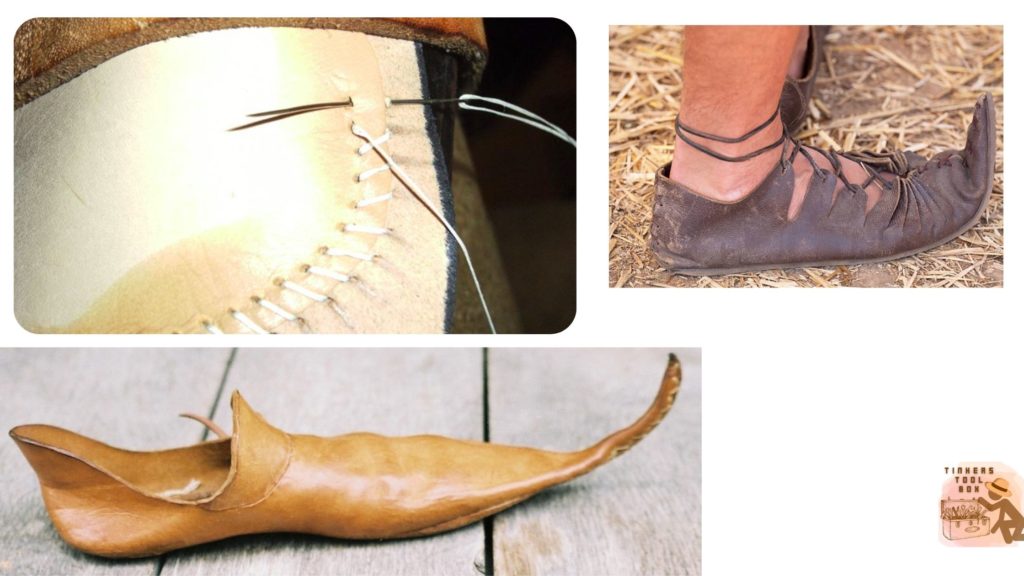
The technique of attaching items to leather, both for functional and decorative reasons, known as applique, developed in the Middle Ages.
Around the same time, there were also advancements in sewing implements and threads. For example, they used boar bristles as needles. These are thick, flexible, and strong, which allows them to be passed through leather while pulling the thread along with them.
The Middle Ages was the time when the design of the Crakow shoe was born. This shoe has a very elongated, often curved end with a pointy tip. These shoes served a very important social function. The longer and more curved the toe, the higher up on the social class someone was. In the case of royalty, it reached several feet long.
It was also during this time that leather trade guilds started to form. These groups helped develop a means by which to pass knowledge on to future generations. It also helped protect that knowledge and the livelihoods of the leather workers.
Conclusion
The art of leatherworking, along with some of the things we know today in modern leatherworking, all started in the Middle Ages, also known as the Medieval Era. This is the era where it truly flourished into something that we know today. A lot of advancements have happened and they have done a lot of things that we are still doing today. It is the Middle Ages, but we can consider it as the Renaissance of Leatherworking at this point.
